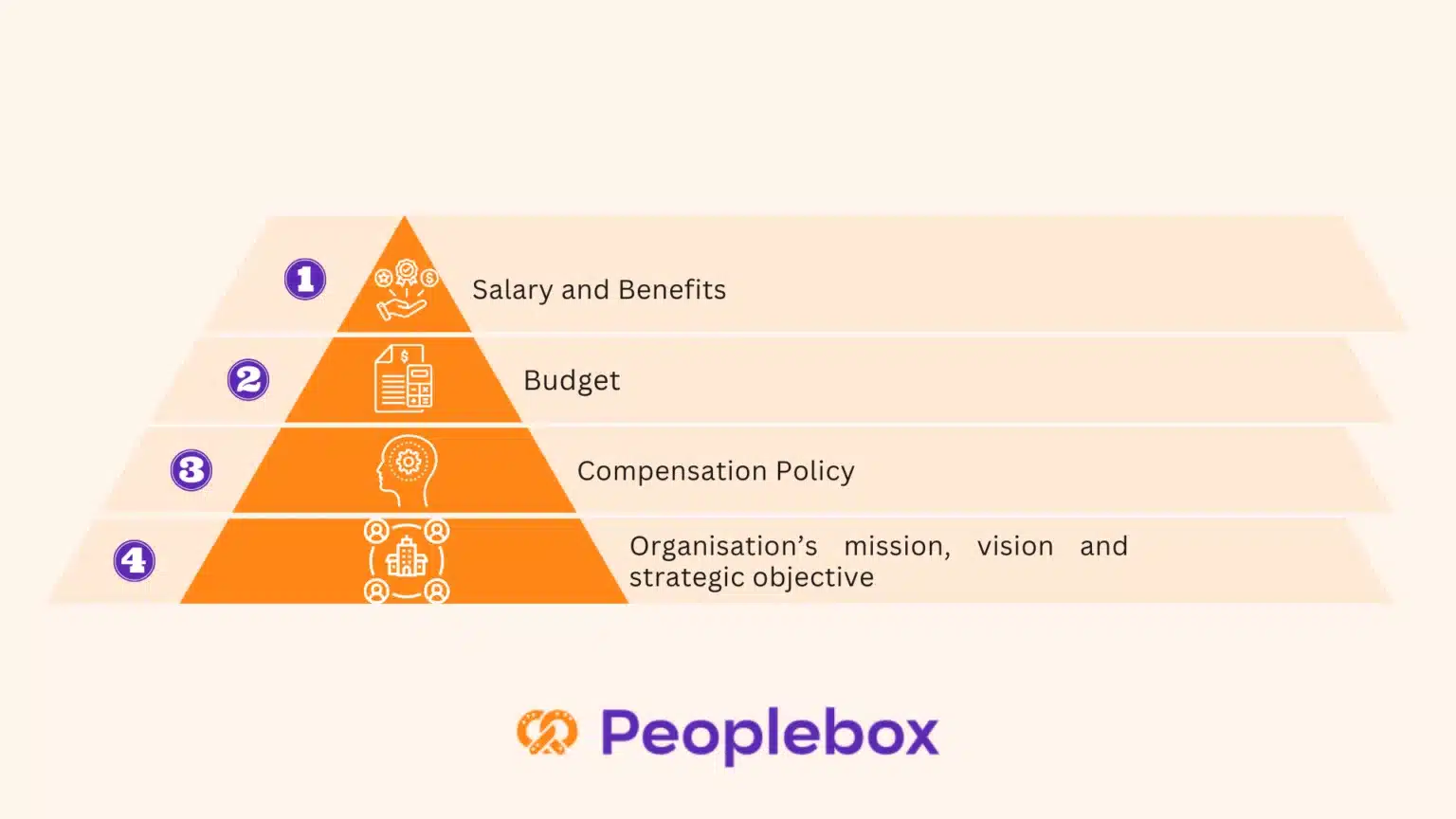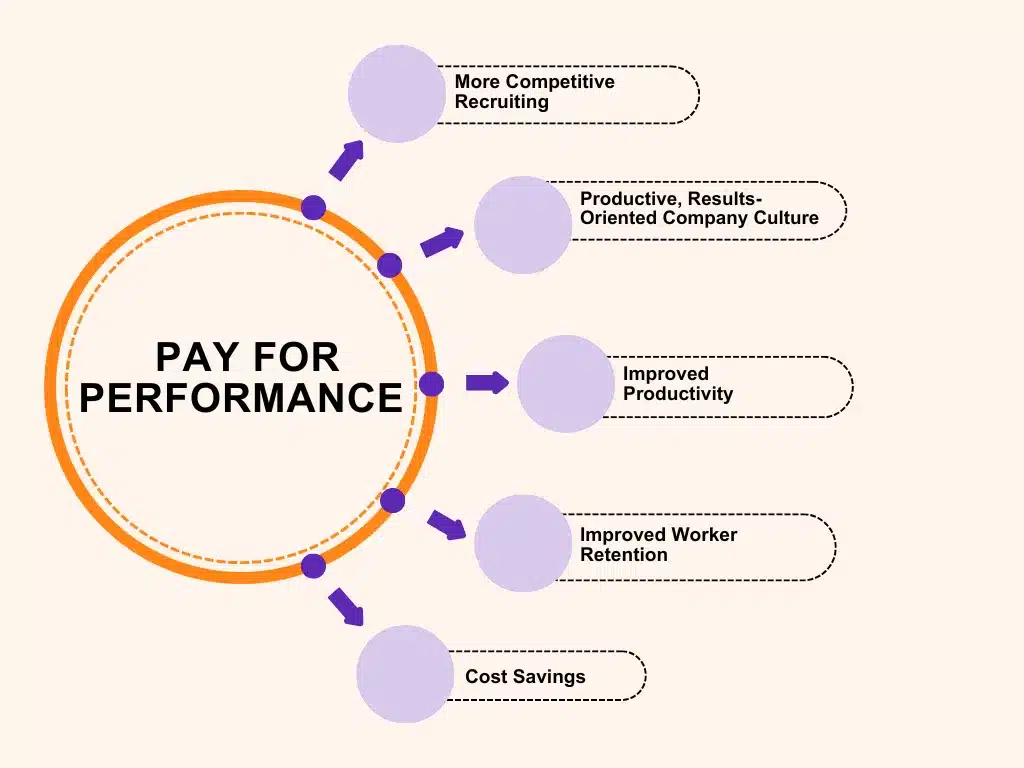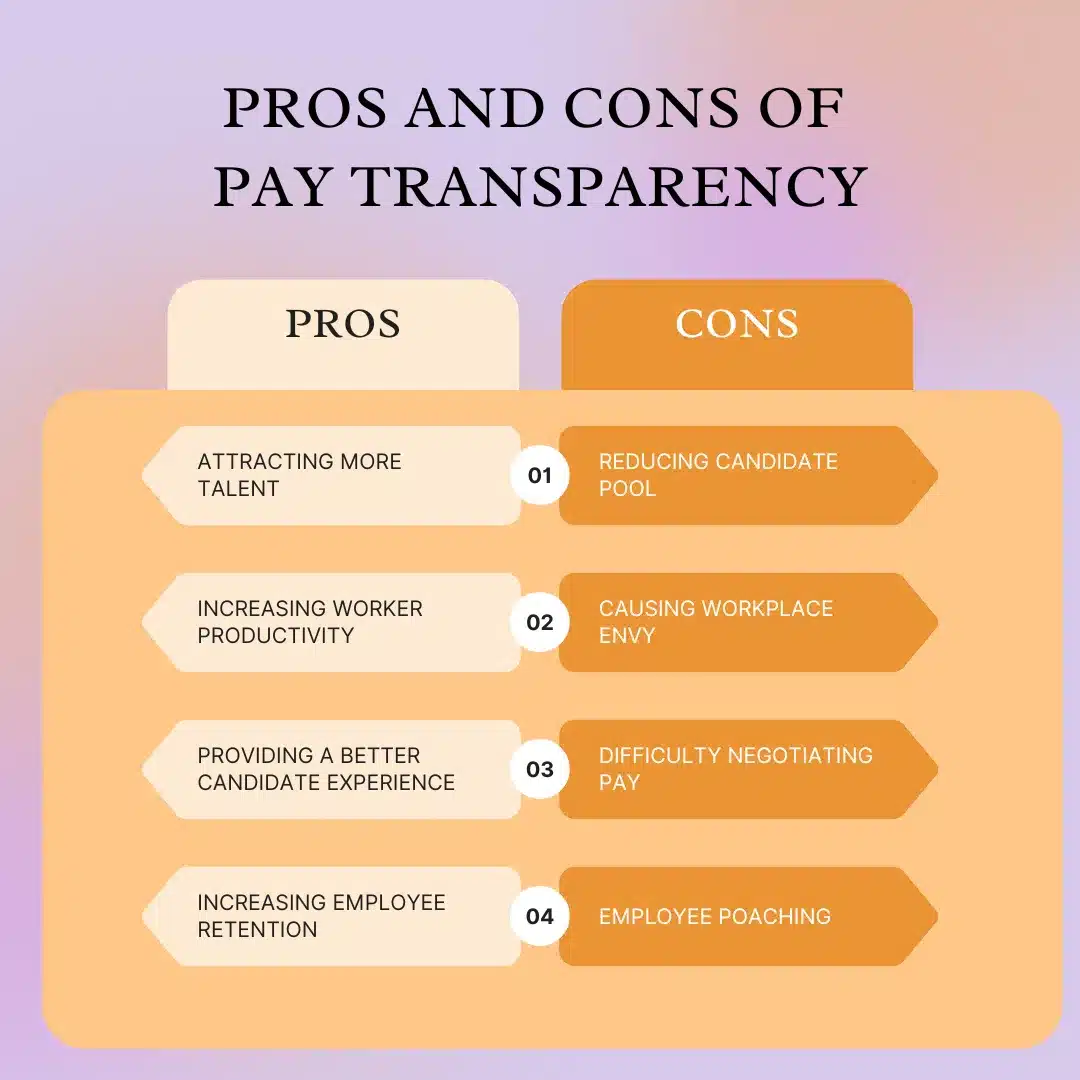There are a couple of reasons why someone wants to work for a company:
- Money (how much they’re paid, compensation philosophy)
- Job satisfaction (the impact they’re making)
- Safety (monetary, physical, and emotional)
- Environment (company values, colleagues, etc.).
When we think of the hiring process, compensation and negotiations are vital, and when we say ‘compensation,’ we don’t imply just the salary but additional perks that need to be checked. Say,
Base Pay, check. Incentive Pay, check. Benefits and Perks, check. Pay for Performance, check. Equity and Fairness, check.
So, if compensation plays such an elemental role in the hiring and employee retention processes, it only makes sense to pay attention to your compensation philosophy.
Wondering how to go about building it? No wonder we’ve got you covered. Here we will see:
- What is compensation philosophy?
- Why should you focus on compensation philosophy?
- What does the compensation philosophy include?
- What are the different types of compensation philosophy? And
- Step-to-step guide to building your compensation philosophy
In addition, we’ve listed some practical examples that you can later model your compensation philosophy upon.
What is Compensation Philosophy?
To put it into simple words, compensation philosophy is a formal statement or document that defines and outlines a company’s approach to employee pay and benefits. It is a guideline for how the organization determines and distributes salaries.
This philosophy reflects the company’s values, financial goals, and competitive position in the market. A well-drafted compensation philosophy encompasses the entire package for employees, including bonuses, benefits, and non-monetary rewards.
Through a clear philosophy, an organization can ensure consistency and fairness. It also aligns employee incentives with business objectives and helps manage compensation costs effectively.

Why Do You Need a Compensation Philosophy For Your Business?
If you consider a compensation philosophy as a ‘good to have’ document, you might have difficulty standing out in today’s competitive market. It is a ‘need to have’ document for any growing company, and here are a few benefits of a compensation philosophy:
- Attracting the Right Talent: The best candidates value transparency and equity, and that is exactly what you portray through your compensation philosophy. Therefore, you may stop searching for top talent talent, but become a magnet for them.
- Higher Employee Retention: Employees who understand and trust the compensation process likely feel valued and satisfied in their roles. This leads to higher retention rates, reducing the costs and disruptions associated with high employee turnover.
- Build a Clear Structure for Equitable Pay: According to the American Association of University Women, women still earn 84% of what men do. A well-defined compensation philosophy ensures that pay decisions are consistent and equitable across the organization. This is crucial to curb pay disparities that may happen in the background.
- Clear Processes Build Scalable Businesses: Clear guidelines for pay and benefits make it easier to manage compensation as your company grows. They ensure that new hires and promotions are handled consistently, maintaining organizational harmony.
- Transparency on All Levels: A compensation philosophy builds trust between employees and management. When employees understand how their pay is determined and see that it is based on clear, fair criteria, it maintains a culture of trust and openness.
- Market Competitiveness: By defining how you compare with similar organizations in terms of pay (e.g., above, at, or below market averages), you can influence your company’s competitive position in the market.
- Legal Compliance: A compensation philosophy helps ensure compliance with legal and regulatory requirements. It aids in structuring compensation programs that adhere to laws regarding minimum wages, overtime pay, and equal pay.

What Should A Compensation Philosophy Include?
According to a survey by Gartner, companies with a clear compensation philosophy tend to have a 58% higher employee retention. If you want such outcomes in your business, here are some things you should include in your compensation philosophy:
- Company Principles: Always begin with an outline of your company’s mission, vision, and values, and how your compensation philosophy aligns with them.
- Pay Structure: Provide a detailed understanding of base salaries. This should include how you determine pay ranges for different roles within your organization.
- Benefits Package: Detail an outline for all the non-monetary benefits you provide to employees, such as such as health insurance, retirement plans, and wellness programs.
- Performance-Based Incentives: Offer a description of the criteria for bonuses, ESOPs, and other incentive and performance-related rewards. You should clearly explain how individual and team performances are measured and rewarded within the company.
- Review and Update Process: Write guidelines on how often you will review and update the compensation philosophy so that it stays relevant and competitive.
- Communication Strategy: Explain how you will communicate the compensation philosophy to employees, emphasizing transparency and understanding.
Understanding the Different Types of Compensation Philosophy
Choosing the right compensation philosophy ensures that your company aligns its pay practices with business objectives and employee expectations. Let’s explore different types of compensation philosophy so you can choose the one that fits your organization the best.
- Market Pay
Market pay aims to match the market standard to stay competitive. It is where a company sets its pay rates based on what other companies in the same industry and geographical area are offering for similar roles.
Benefits:
- Attracts top talent by offering competitive salaries.
- Easy to justify pay decisions with market data.
- Helps maintain equity and fairness within the industry.
Drawbacks:
- Can be expensive if market rates are high.
- May not always reflect the unique value of your company or employees.
- Equal Pay
Equal pay ensures that all employees are paid the same for the same work, regardless of gender, race, or other factors. It aims to eliminate pay disparities and promote fairness.
Benefits:
- Promotes fairness and equity in the workplace.
- Enhances the company’s reputation as a fair employer.
- Helps in legal compliance and reducing discrimination lawsuits.
Drawbacks:
- May not account for individual performance or experience differences.
- Can be challenging to implement and monitor consistently.
- Flexible Pay
Flexible pay allows customization of compensation packages based on individual employee needs and preferences. This could include options like choosing between higher salaries or more benefits.
Benefits:
- Increases employee satisfaction by offering personalized compensation.
- Attracts a diverse workforce with varied needs and preferences.
- Can enhance employee retention by catering to individual life stages and priorities.
Drawbacks:
- Complex to administer and manage.
- Potential for perceived inequity if not communicated and managed well.
- Tailored Pay or Pay for Performance
Tailored pay is a personalized approach where compensation packages are designed based on specific roles, skills, and individual performance. It focuses on rewarding individual contributions and aligning with personal career goals.
Benefits:
- Provides a competitive recruiting structure based on productivity.
- Helps retain top talent by recognizing and rewarding their contributions, and maintains a results-oriented culture.
- Allows for cost savings at multiple levels due to performance metrics.
Drawbacks:
- Can lead to perceptions of favoritism if not managed transparently.
- Can be resource-intensive to administer and keep updated.

A Step-by-step Guide to Building an Effective Compensation Philosophy for Your Business
Crafting a comprehensive compensation philosophy can seem daunting. So, to make things simpler for you, we’ve created this step-by-step guide that you can follow to build a loophole-free and effective compensation philosophy document.
Step 1: Understand the Company’s Mission, Vision, and Values
The foundation of an effective compensation philosophy begins with identifying whether your business prioritizes quality over quantity or vice versa. This distinction influences how you structure your compensation.
You should also reflect on how you view employee satisfaction and retention, as this will shape your pay and benefits strategy.
Ensure your compensation philosophy aligns with your company culture and vision. For instance, if bootstrapping or securing inbound investments is key to your growth, balance market pay with the need to reinvest in the business. This alignment ensures a sustainable and motivating compensation approach that supports both your employees and business objectives.

Step 2: Assess Your Organisation’s Financial Structure
You cannot build an effective compensation philosophy without aligning it with your organization’s financial structure.
Consider the client/customer pipeline you’re building and ensure your philosophy supports sustainable growth. Understand basic resource allocation, including operational costs and revenue streams.
You should aim at developing a flexible philosophy that can adapt to financial fluctuations, such as introducing incentive models instead of fixed pay to combat resource crunches. For instance, a market pay strategy can be balanced with performance-based incentives to maintain financial health while rewarding high performers.
Step 3: Conduct Market Research
Conduct your market research to understand the average compensation for each role. Salary surveys tools and benchmarking reports provide valuable insights.
Naturally, you want to avoid paying entry-level executives the salary of junior managers, and vice versa. Use data to inform your compensation structures, aligning them with your company values and financial resources.
Step 4: Build a Strategy for Hard-to-fill Jobs
Despite thorough market research, some roles will be challenging to fill, mostly because of ongoing market compensation fluctuations.
Develop a side strategy specifically for these positions. This might include offering higher market pay, additional performance-based incentives, or unique benefits tailored to attract top talent. Consider flexible pay options to meet diverse candidate needs.
Step 5: Document Your Compensation Philosophy Well
Now that you already have everything prepared for your compensation philosophy, it is time to put it down to paper. Doing this is great for authenticity and also for legal purposes. Here’s what you’ll be setting down:
- Summing statement: A simple statement that reflects your philosophy style goes a long way. Let us look at some examples of summing statements:
- To reflect a commitment to pay equity, “Our compensation philosophy is rooted in fairness and equity, ensuring that all employees are rewarded based on their contributions and abilities, regardless of gender, race, or background.”
- To promote transparency and communication, “We are committed to transparency in our compensation practices, ensuring that employees understand how their pay is determined and how they can progress within the organization.”
- Payment Models: Here, you will define your pay position strategy, base pay models, incentive models, and appraisal models. Make sure each section is as detailed as possible to leave no ambiguity.
Step 6: Get a Compliance Audit
Since your compensation philosophy document is shared, it can be used in legal disputes. As with any such critical documents, you should get a compliance audit for your compensation philosophy.
This audit will find any loopholes and make the document bulletproof, allowing you to be safer from any possible disputes in the future.
How Often Should You Revisit Your Compensation Philosophy?
A compensation philosophy should be a dynamic document that evolves with your business. As your company grows, market conditions change, and employee expectations shift, your compensation philosophy should adapt to these changes.
You must revisit your compensation philosophy at least once a year. Additionally, major changes in your business, such as rapid growth or shifts in industry standards, may necessitate more frequent reviews.
Examples of Successful Compensation Philosophies
To build a successful philosophy, you might want some inspiration, right? Let’s have a look at some compensation philosophy examples that will help you get started quicker:
- Buffer
In one of their blog posts, Buffer revealed how important transparency is to their compensation philosophy. They state that the four pillars of their philosophy are transparency, simplicity, fairness, and generosity.
Buffer also openly revealed how they choose a tailored approach to define salaries for their employees, which is essentially based on their personal living costs.
Such an approach may have its pros and cons, as you can see in the image below.

- Adobe
With their Pay Parity model, Adobe has become one of the most noteworthy examples of companies with clear compensation strategies in place.
Adobe doesn’t choose the location-agnostic approach and does define salaries based on each employee’s location. However, they’ve clearly defined how they maintain equality in payments between two people in the same location, serving the same roles.
- Sourcegraph
Unline Adobe, Sourcegraph has a completely location-agnostic approach in its compensation philosophy. In their public document, they have mentioned how they believe in paying the same amount to people, regardless of where they live, especially because Sourcegraph’s all employees work remotely.
Google is one of the largest companies to have an extremely flexible compensation philosophy.
Google’s pay philosophy promotes a culture of measuring performance through performance-based salaries, flexible work arrangements, and monetary or non-financial incentives. Therefore, the base salary at Google is only a fraction of what employees take home.
Summing Up
The biggest companies in the world have compensation philosophies and are happy to make the public. Why? Because it is this document that will attract the right talent to their organization. Not only that, a company’s public compensation philosophy also defines its brand’s values.
So, when you draft your compensation philosophy, make sure your company values, financial health, and employee satisfaction are the topmost things on your mind.







